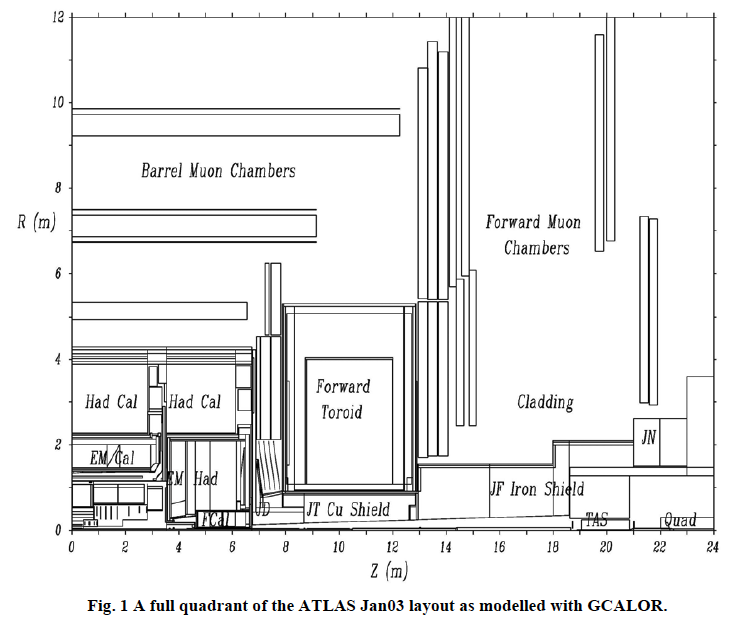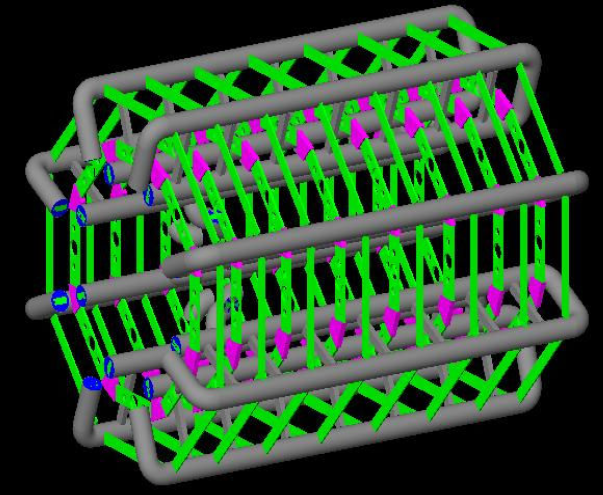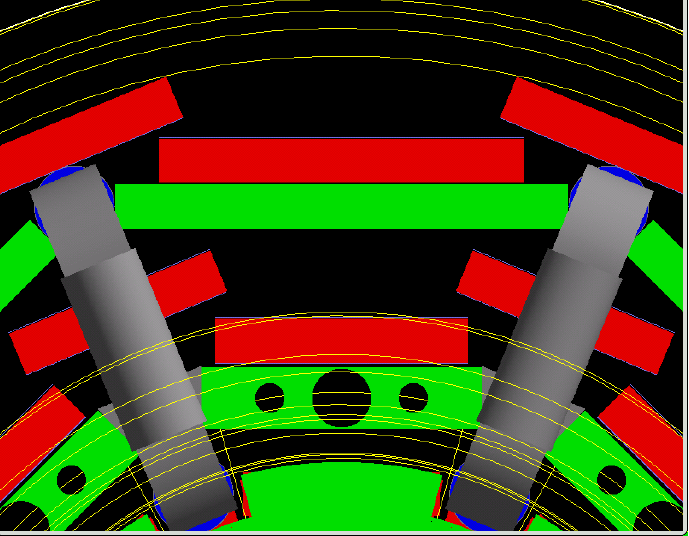...
It is generally accepted that the physics modeling in the FLUKA package gives the best agreement with data for the low-energy neutrons and photons that are important here. On the other hand, ATLAS has little expertise with FLUKA but has much experience with Geant4, which is regarded as having a more flexible geometry definition. We therefore decided to use FLUGG, which couples Geant4 geometry with FLUKA physics.
Validation against previous studies
The earlier studies made by the ATLAS Radiation Background Task Force (RBTF) have been reported in ATL-GEN-2005-001. The first figure shows a quadrant of the layout, for z <= 24 m and r <= 12 m, as modeled in the report.
...
There is already a very detailed Geant4 description of the ATLAS detector used in physics event simulation; however, it is far too complicated for this application. Instead, we will update the validation geometry to be consistent with the full ATLAS description, e.g.
- Beam line and shielding.
- Gap between barrel and toroid.
- More detailed cavern dimensions and outline, including the two large access shafts.
- Previously missing barrel toroid.
- Barrel muon chambers used to be modeled as cylinders, now modeled as flat packages.
- Proper position of endcap muon chambers.
Some simplifications will be have been made, especially detector internal geometries which are important for detector response but not for this application. It is important to maintain the proper isotopic composition of materials as neutron cross sections are sensitive.Expected radiation levels and counting rates will be compared with data after beam turn-on in late 2009. Differences have to be traced back to possible inaccuracies in the modeling.
Validation against data
Cavern background files
sLHC Studies
ATLAS will be replacing the Inner Detector tracker for Super LHC. It is expected to be an all-Silicon detector with pixels and strips. We believe additional shielding is needed for the FCAL. It is also expected to replace part of the muon spectrometer detectors. The scope of the muon upgrade has great uncertainty at this time. It can be as little as replacing the endcap detectors at small radii, or it can be replacing all muon detectors, depending on the background level. One of the goals of the cavern background calculation is to provide a more reliable prediction.
...




